The post Finding Your Perfect White-Label WordPress Development Partner appeared first on Coding.
]]>And here’s the kicker: within the WordPress ecosystem, there’s this entire realm of “white-label development” that’s like the secret behind-the-scenes wizardry many agencies use to make client websites look sharp, load fast, and basically function like a dream. If you’re curious about some of the finer distinctions, there’s a neat overview on white-label vs. traditional WordPress development that can help you see how these approaches differ. But how do you, as an agency or a business, figure out which white-label WordPress development company is the right fit for your needs? That’s the million-dollar question, isn’t it? Okay, maybe it’s not always a million dollars—sometimes you’re on a much smaller budget—but in any case, it’s a question worth exploring.
I want to break it down in a pretty casual way. No bullet-point, hyper-polished, five-step formula. Just a good old-fashioned meander through some of the stuff that really matters. Picture us sitting in an overlit café, sipping far-too-expensive cold brew, and discussing the ins and outs of these elusive white-label wizards. We might veer off topic once or twice—maybe I’ll rant about how cold brew is basically coffee concentrate that’s out to ruin my sleep schedule—but I promise we’ll loop back to the point eventually. So settle in, and let’s begin.
The Appeal of White-Label WordPress Development
First off, why would anyone even want to go the white-label route? Let’s say you run a digital marketing agency, or maybe you specialize in design, branding, or SEO. Your clients frequently ask if you “do websites.” Maybe you do, and maybe you don’t. If you don’t, you could either a) hire in-house WordPress developers (expensive, time-consuming, and a bit risky if you’re not sure how stable your web design pipeline is), b) turn clients away (heartbreaking), or c) partner with a white-label WordPress development company.
When you pick option c, you’re basically bringing in a ghostwriting team, except instead of writing your memoir, they’re building your clients’ websites. The final product has your branding, your style, and your name on it—nobody needs to know you had a team of quiet geniuses behind the curtain. You can focus on the things you’re great at, like marketing strategy or designing gorgeous brand assets, and the white-label folks handle all the complicated WordPress dev stuff. That’s synergy for you. (I promise never to say “synergy” again.)
Like Dating, But With Code
I always think of picking a white-label WordPress company like finding the right person to date. You want someone reliable, consistent, good at communicating, and, let’s be honest, a bit charming wouldn’t hurt. Of course, you don’t need them to wash the dishes or anything, but it wouldn’t hurt if they tidied up the code every now and then. Let’s talk about some of the “dating criteria” you might want to keep in mind:

- Portfolio & Past Work
Just like you might casually Instagram-stalk a potential date to see what they’re into (don’t deny it), you’ll want to do a little light internet stalking on your potential white-label partner. Check out their past projects, the type of websites they’ve built, and how those sites function. If they claim to be speed wizards, does their portfolio load quickly? If they say they handle big e-commerce stores without breaking a sweat, have they actually done that before? Don’t just take their word for it—kick the tires.
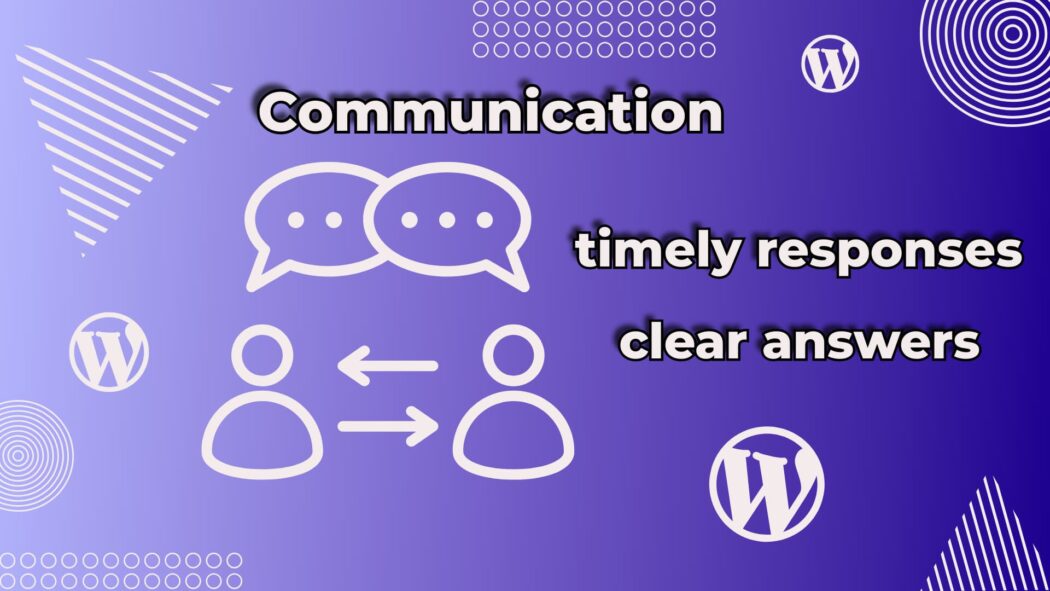
- Communication Style
If you send them an email or message, do they respond within a reasonable timeframe? And when they do, is it with clarity or do you feel more confused afterward? Communication is huge. You don’t want to be sending urgent queries into a black hole, especially when a client is breathing down your neck for a site update. I once worked with a developer who disappeared for a month. Turned out they’d been on vacation but forgot to set up an out-of-office message. The project timeline basically imploded, and I survived on coffee and denial. Let’s just say, that was not a match made in heaven.

- Technical Expertise & Flexibility
Look, WordPress is a sprawling universe. Beyond just WordPress’s core functionalities, you’ve got thousands of themes, plugins, and custom code possibilities. It’s like a giant LEGO set for grownups, except you can break everything if you’re not careful. You want a partner who knows their way around coding best practices (PHP, JavaScript, CSS, HTML, etc.), but also knows all the weird little quirks that come with managing WordPress sites at scale. According to WordPress.com stats, over 70 million new posts are published on WordPress every month [WordPress.com Stats], which gives you a sense of how massive and diverse the ecosystem is. Someone who can handle the chaos is a keeper.
A Brief Tangent About Themes & Plugins
Let me just have a short geek-out moment here. So, WordPress has this entire marketplace of themes and plugins that can make your site do just about anything. There’s a plugin for SEO, for security, for image optimization, for selling T-shirts with your cat’s face on them, for memberships, for mailing lists—probably for automated cat feeding, too. The possibilities are endless, and your white-label partner should be able to navigate that world without spiraling into plugin overload.
I once saw a WordPress site that had 67 active plugins. Sixty-seven! You can imagine how “fun” that was to manage. The site was slow, like “go make a sandwich while the page loads” slow. That’s where a strong dev partner helps you cut the bloat, optimize performance, and ensure that everything stays secure. Because a hacked client site is not going to make anyone’s day better, and if your brand is on that site, guess who’s going to get the phone call?
Technical Stuff is Sexy (In Its Own Way)
We like to imagine code is dry and boring, but in the right hands, it’s kind of beautiful. White-label companies that know their way around the WordPress REST API, custom post types, custom fields, or advanced theme customization can do magical things for your clients. They can create membership portals, booking systems, dynamic content, and all sorts of interactive features that make a website stand out instead of being just another template. And that’s valuable when you’re trying to sell your digital services at a premium—because let’s face it, the average cost of a custom WordPress site can range from $1,000 to $50,000 or more, depending on complexity [WPExplorer]. You want the final outcome to look like you actually used some of that budget on meaningful work.
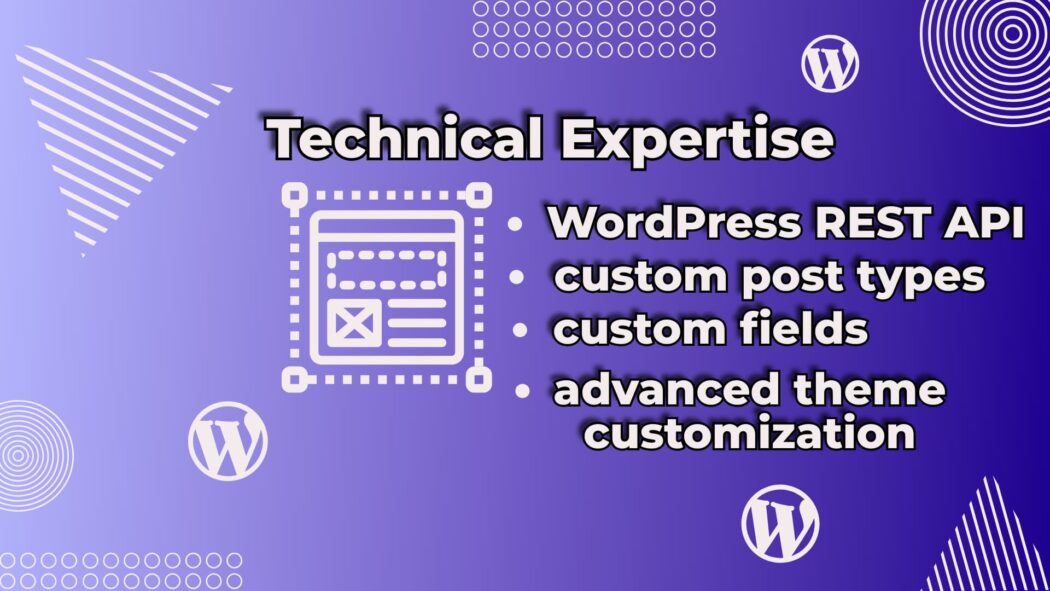
The “Team Player” Factor
Ever tried to do a group project in high school where one person ends up doing 90% of the work while the rest of the group ghostwrites the final PowerPoint slides? Not fun. When you’re working with a white-label WordPress company, you’re effectively forming a team. That means they need to be aligned with your internal processes, your timelines, and the style that your clients are accustomed to. If your brand identity is all about minimal, high-end, Apple-like design, you don’t want devs who keep pushing chunky, loud, out-of-the-box templates. You want that sleek, consistent vibe to carry through.
A quick personal story: I once partnered with a white-label team that insisted on using their own naming conventions for everything, from CSS classes to file structures. That might sound like no big deal, but it meant that every time I looked under the hood, I was totally confused about what was controlling what. If I asked them to make changes, they would say, “Sure, but we do it this way,” and then proceed with some cryptic approach. Communication meltdown ensued. Ultimately, we parted ways. The moral? Find a team that’s flexible enough to adapt to your style or at least meet you halfway.
Pricing vs. Value (A Subtle, But Important Distinction)
Money talk is never the most fun, but it’s necessary. With white-label services, there’s the constant push-and-pull of how much you’re paying them versus how much you’re billing the client. If you’re paying more for development than you’re charging your client, that’s a tough business model to sustain—unless you’re aiming for philanthropic web design. On the flip side, if your partner is dirt-cheap, that might be a red flag too. Good developers often know their worth, and paying pennies on the dollar might land you with subpar code that you’ll spend more time fixing.
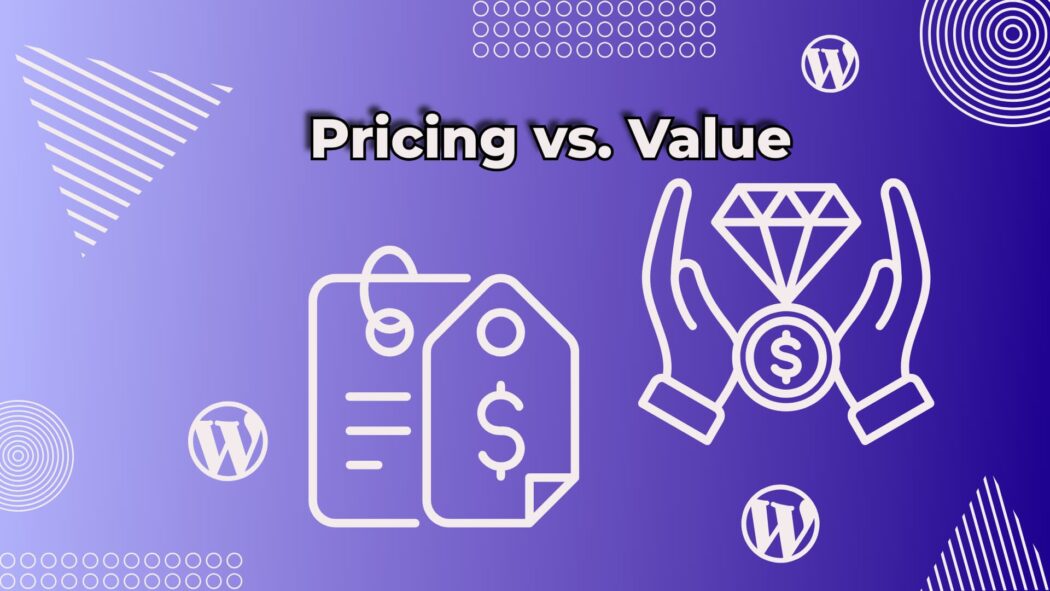
But hey, bargains do exist. Sometimes a smaller boutique firm or a newly established company with a talented staff might offer great rates as they’re building their portfolio. The trick is to weigh price against perceived value. Are they consistently meeting deadlines? Is their code stable? Is the site secure? If yes, that’s real value—and that means you can mark up the service for your own client. Everyone wins, and you don’t end up sobbing into your keyboard at 2 AM, trying to patch vulnerabilities because the devs left the site wide open to hackers.
Cultural Fit and Personality (Yes, This Matters)
You might think you don’t really care if the white-label dev is quiet or extroverted or into rescue dogs or whatever. But a cultural fit can make a huge difference in how smoothly your projects go. If their team resonates with your brand values and your way of doing business, you’ll probably work together more harmoniously. The intangible “vibe” is something you can often pick up on during early calls or even email exchanges. Do they joke around a bit if you’re also laid-back? Or are they super formal when you’re more casual? Sometimes you can adapt your style to theirs, sometimes you can’t. But ignoring this factor is like ignoring the squeaky brakes on your car—eventually, it’s going to cause a problem.
Ask for References, But Actually Follow Up
For the love of everything, if you’re serious about a partnership, ask for references. Then—this is the important part—actually call or email those references. “We have references available upon request” is a classic line, but so few people ever follow up. When you do, you can find out all sorts of behind-the-scenes info:
- How quickly did the white-label dev handle emergencies?
- Were they transparent about timelines and deliverables?
- Did they charge any unexpected fees?
- How collaborative were they?
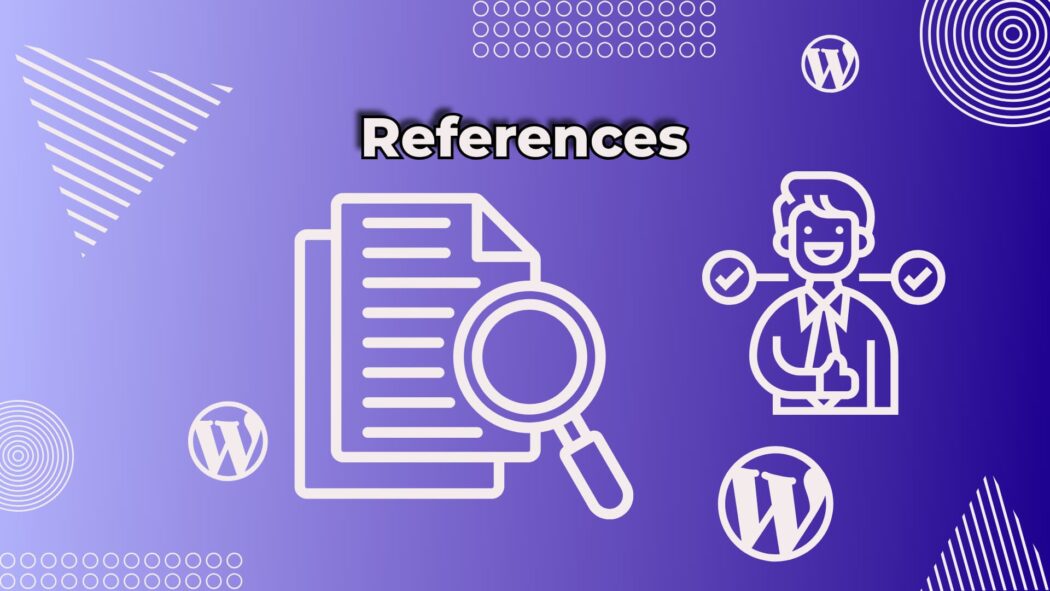
You might uncover some juicy stories (both good and bad) that help you make a final decision. A quick 15-minute conversation could save you months of headaches if the references reveal consistent red flags. On the flip side, they might shower praise and basically hand you the sign you’ve been waiting for that says, “Yes, these are your people!”
Support and Maintenance (The Underrated Deal-Breaker)
A website is not a one-and-done situation. Well, it can be, if your client has a strict “set it and forget it” mentality— but in the real world, sites need updates, maintenance, security patches, maybe new features down the line. If your white-label partner has a great track record of ongoing support, that’s a major plus. Do they offer monthly maintenance plans under your branding, or do you need to handle that in-house? If something goes haywire on a Sunday afternoon, do they have an emergency contact? These are all questions worth asking before you commit.
Statistics show that the average WordPress site can experience up to 44 attempts per day by hackers to break in [Wordfence]. Yikes, right? That’s not meant to scare you, but it’s a reminder of why ongoing care is crucial. You don’t want to find out your partner only works Monday through Friday, 9-5, when your client’s e-commerce site breaks down on Black Friday. That’s a meltdown scenario.
Random Coffee-Related Interruption
I did warn you there might be tangents. Let’s take a brief pause to appreciate coffee. Anyone else find that coffee shops have gotten weirdly obsessed with alternative milks? The other day, I was in line behind someone who ordered a half-caf, soy-latte with a splash of oat foam, a hint of almond drizzle, and one single cube of ice. The barista looked like they were about to spontaneously combust. Meanwhile, I was just there for a straightforward black coffee. End tangent. Thank you for humoring me.
Red Flags to Watch Out For
Just as with dating, there are definitely some relationship red flags in the white-label WordPress world. If they’re chronically late to meetings or vanish for weeks at a time without explanation, that’s not a good sign. If they can’t show you any projects they’ve worked on, or if they claim every project is under NDA so you can’t talk to references, proceed with caution. If they’re pushing you to sign a super long contract without letting you test their services on a smaller project first, maybe slow down.
On the technical side, if they rely on an absurd number of plugins and can’t write custom code when necessary, that can be a sign you’re dealing with novices. Also, watch out for devs who are stuck in old or insecure coding practices. WordPress evolves quickly, and you need a team that’s at least somewhat on top of updates and best practices. And for the love of penguins, please steer clear of any partner that tells you version control (like Git) is optional or not necessary. That’s basically a developer sin, and it can lead to catastrophic mistakes.
The Joy of a Perfect Fit
When you do find that sweet spot— that white-label WordPress company that works seamlessly with your brand, delivers projects on time, communicates effectively, and knows the ins and outs of advanced WordPress development—it’s like a breath of fresh air. You’ll wonder how you ever managed without them. They’ll handle the behind-the-scenes grunt work, leaving you free to do what you do best. And your clients? They’ll think you’re a web development superhero, effortlessly rolling out these beautiful, functional WordPress sites with zero drama.

If you want to see how some agencies are already making their WordPress projects less chaotic, there’s a great article on making website projects less chaotic (and dare we say, fun) that dives into tips and strategies from real-world examples. It might spark some ideas on how your partnership could thrive.
Maybe that’s the biggest perk of going white-label. You basically get to expand your service offerings and take on more ambitious projects without dealing with the overhead of hiring a full-time dev team. Less overhead means more flexibility and (hopefully) more profit. Win-win, right?
Give Yourself Room to Experiment
Before you fully commit, it’s often smart to do a trial run. Maybe you have a small project or an internal site that you can hand over to test the waters. How does the white-label partner handle your requests? How quickly do they deliver? How do they respond to feedback? Treat it like a pilot episode of a TV show— if the reception is good, proceed and produce a full season. If it’s a disaster, at least you only lost one project instead of your entire pipeline.
Wrapping Up
So there you have it: a long, somewhat meandering, but hopefully helpful chat about what to look for in a white-label WordPress development company. We touched on everything from portfolio creeping to plugin mania, from pricing woes to the weirdly critical importance of personality fit. And yes, there was also a brief coffee rant, because apparently that’s my brand now.
The main takeaway? White-label WordPress development is a great solution if you want to offer web design and development services without hiring a whole in-house team. But it’s also like picking a partner you want to rely on for the long haul— or at least for the duration of your biggest client projects. Take the time to get to know them, check their background, see if they share your values, and pay attention to red flags. Because once you find a good one, it makes your life so much easier, and you get to keep your focus on the stuff you actually enjoy doing (and probably pay the bills for you).
Also, you’ll sleep better knowing you have a team ready to jump in if your client’s site decides to take a nap during prime business hours. Remember that stat about WordPress powering around 43% of the web [W3Techs]? That also means there’s a lot of competition out there—so having a dependable dev partner is a solid way to stand out and keep your clients happy.
Anyway, thanks for sticking with me through this coffee-fueled ramble. I hope you found some nuggets of wisdom that’ll guide you in your search for the perfect white-label WordPress team. And if not, well, at least you learned that 67 plugins is probably too many. Good luck with your hunt, and may the WordPress gods bless your future projects with speedy load times, stable code, and minimal theme conflicts. Cheers!
The post Finding Your Perfect White-Label WordPress Development Partner appeared first on Coding.
]]>The post WordPress for Agencies: Making Website Projects Less Chaotic (and Dare We Say, Fun) appeared first on Coding.
]]>But here’s the thing—WordPress can be your secret weapon. It’s like the Swiss Army knife of website development. Flexible? Check. Scalable? You bet. Easy to use? Mostly (we’ll get into that). The trick isn’t just using WordPress—it’s using it well. And that’s what this little chat is about: how to streamline your agency’s website projects with WordPress and, hopefully, make the whole process a little less… stress-y.
Why WordPress? Because It Just Works (Mostly)
First, let’s address the elephant in the room: why WordPress? You know there are other platforms out there—Wix, Squarespace, Shopify. They’re shiny, they’re user-friendly, and clients ask about them all the time.
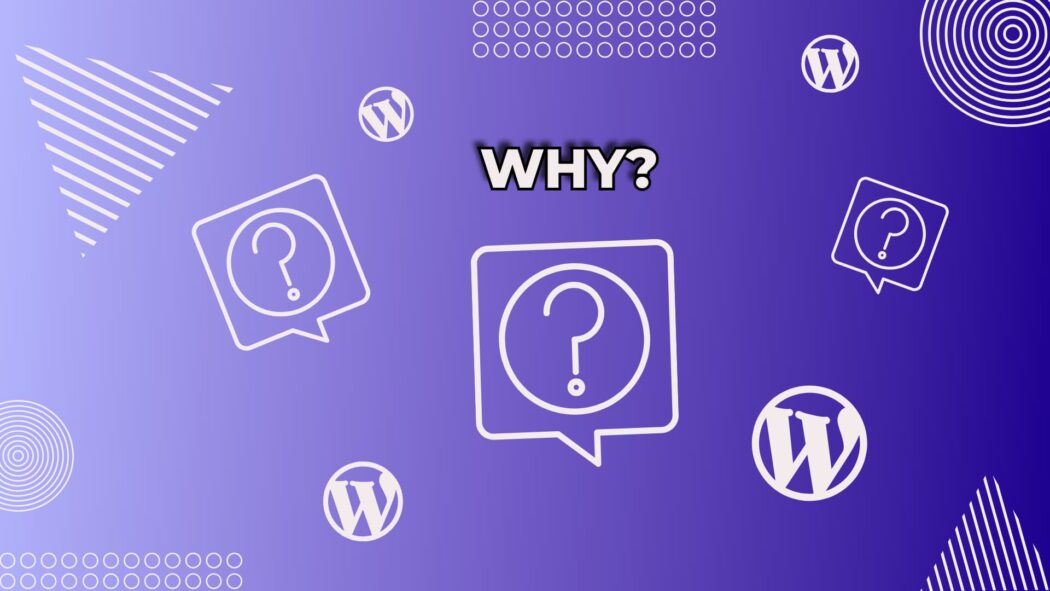
But here’s the thing: WordPress is like the wise old grandparent of CMS platforms. Sure, it’s not always the easiest to explain to clients (“Yes, Karen, it does need updates. No, they’re not optional.”), but it offers unmatched flexibility. You can build anything—a blog, a full-blown e-commerce empire, or that niche project your client dreamed up after one too many espresso shots.
Step One: Start with the Right Tools
Imagine building a house without a hammer. Or making coffee without, well, coffee. That’s what it’s like tackling a WordPress project without the right tools.
Choose a Solid Theme (and Stick to It)
Raise your hand if you’ve spent hours arguing over themes. (Guilty.) Picking a theme is one of those things that seems easy but quickly turns into a rabbit hole of “What about this one?!” My advice? Pick a few tried-and-true themes that work for most clients, like Astra or GeneratePress. Lightweight, customizable, and not likely to cause random compatibility issues.
Having a go-to theme saves time, reduces decision fatigue, and lets your team focus on the fun stuff—like actually designing the site.

Plugins: Less Is More
Ah, plugins. They’re like candy in a convenience store: so many options, and you want them all. But here’s the hard truth: too many plugins can turn even the fastest site into a sluggish nightmare.
Stick to the essentials. A good SEO plugin (Yoast or Rank Math), a caching plugin (WP Rocket), and something for security (Wordfence or Sucuri). Beyond that? Be picky. And for the love of all things WordPress, don’t install 10 different plugins to do things one multi-purpose plugin could handle.
Step Two: Create a Repeatable Process (Seriously, You’ll Thank Yourself Later)
If your agency’s WordPress projects feel chaotic, it’s probably because you’re reinventing the wheel every time. Spoiler alert: you don’t have to.
Templates Are Your New Best Friend
You know those tasks you do over and over again? Like setting up a contact form or building a basic homepage layout? Turn them into templates.
With page builders like Elementor or Beaver Builder, you can create reusable layouts for different types of projects—portfolios, blogs, e-commerce sites, you name it. And don’t forget Gutenberg blocks! They’re perfect for creating custom content modules you can drop into any page.
Standardize Your Onboarding
Let’s talk about clients for a second. Specifically, how to keep them from derailing your projects. Standardized onboarding is the answer. Create a checklist or form that covers everything you need upfront: branding guidelines, content requirements, preferred features, and—this is key—the project timeline.

Trust me, when a client tells you three weeks in that they’ve “decided to write the copy themselves,” you’ll be glad you clarified deadlines in advance.
Step Three: Keep the Team (and Clients) on the Same Page
You know that classic group project feeling? The one where half the team is winging it, and the other half is panicking? Yeah, that’s not the vibe you want for your agency.
Use a Project Management Tool
Tools like Trello, Asana, or ClickUp can save your sanity. Break each project into phases—design, development, testing, launch—and assign clear tasks with deadlines. Bonus: these tools make it easy to share progress with clients, so they feel involved without micromanaging.
Communicate Like a Pro
Speaking of clients, clear communication is everything. Weekly updates, milestone reviews, and (gently) reminding them to provide feedback on time can keep things moving smoothly. And when you hit a snag? Be upfront. Clients appreciate honesty way more than vague excuses.
Step Four: Don’t Skip the Boring Stuff (a.k.a. Maintenance)
Here’s the part no one wants to talk about: once the website’s done, your work isn’t over. WordPress sites need love and care—updates, backups, and the occasional security tweak. If you’re not offering maintenance plans, you’re leaving money on the table (and possibly setting your clients up for future headaches).
Automate What You Can
There are tools for everything these days. Use them. ManageWP or MainWP can handle backups, updates, and even performance checks for multiple client sites. It’s like having a digital butler—fancy, but worth it.
Educate Your Clients
Let’s face it: some clients will break their sites. They’ll install random plugins, delete things they shouldn’t, or forget to renew their hosting. Save yourself the trouble by offering basic training or a client-friendly manual. Even a short Loom video walking them through their site can prevent a lot of headaches.

Real Talk: Things Will Still Go Wrong
Look, no matter how streamlined your process is, things will go sideways sometimes. Maybe a plugin update breaks something right before launch. Maybe a client goes AWOL for weeks. Maybe you accidentally delete the entire staging site (not that I’ve ever done that…).
The key is to roll with it. Every hiccup is a chance to learn and tweak your process. And when all else fails? Coffee. Lots of coffee.
Why It’s Worth It
Building WordPress sites for clients isn’t always easy, but it’s incredibly rewarding. You’re creating something tangible—something that helps businesses grow, shares stories, and connects people. And when you see a client’s face light up as their site goes live? Totally worth the late nights and occasional panic.
So here’s to streamlining, learning, and maybe even enjoying the chaos a little. Because hey, if WordPress can handle 43% of the internet, your agency can handle a few tricky projects. Just don’t forget the coffee.
The post WordPress for Agencies: Making Website Projects Less Chaotic (and Dare We Say, Fun) appeared first on Coding.
]]>The post Next-Generation Networks: IPv6 and the Transition from IPv4 appeared first on Coding.
]]>IPv4 and IPv6
IPv4, which was created in 1983, laid the groundwork for today’s internet. It relies on 32-bit addresses (such as 192.168.0.1), but this limits the number of available IPs to around 4.300.000.000 . Initially, this may seem like a large number, but with the surge in connected devices, such as smartphones, tablets, IoT gadgets, and more, IPv4 addresses are running out.
The depletion of IPv4 addresses brings forth various issues. One challenge is the necessity to implement NAT mechanisms, allowing multiple devices to share the same public IP address. This complexity in network setups can lead to performance and security concerns. Furthermore, IPv4 addresses are becoming more costly and harder to acquire for new organizations and service providers.
Transitioning from IPv4 to IPv6
The shift from IPv4 to IPv6 is a complex and time-consuming process because there is an extensive array of devices and infrastructure currently reliant on IPv4. Nevertheless, it is an unavoidable progression, and many organizations and service providers have already initiated the adoption of IPv6.
The transition procedure encompasses multiple phases:
1. Assessment of Existing Infrastructure: Organizations must evaluate the readiness of their current infrastructure for the transition to IPv6.
2. Preparation for IPv6: This encompasses staff training, updating network equipment, and creating a transition plan.
3. Gradual Implementation: Gradual deployment of IPv6 enables organizations to migrate a portion of their network to the new protocol progressively, without disrupting the existing infrastructure.
4. Testing and Debugging: Rigorous testing and debugging of the new infrastructure are pivotal to ensure its stability.
5. Full Transition: Following the successful implementation and debugging of IPv6, organizations can entirely transition to using the new protocol.
IPv6 Testimonials
To understand how IPv6 can be beneficial in everyday life, let’s take a look at testimonials from three different individuals.
Testimonial 1: John
“I work in the IT field, and IPv6 has been immensely helpful. We transitioned to IPv6 in our company, and it allowed us to simplify network configuration, avoid NAT complexities, and provide each device with a unique IP address. This made our network more reliable and efficient.”
Testimonial 2: Anna
“I’m a homemaker, and when we switched to IPv6 in our home, I noticed a significant improvement in the quality of connectivity for our smartphones, tablets, and IoT devices. With IPv6, we can connect more devices to the network without issues, making our everyday life more convenient.”
Testimonial 3: David
“As a network administrator at a university, I know the importance of having enough IP addresses for students and faculty. Transitioning to IPv6 allowed us to provide each user with a unique address and improved the security of our network. It also gave us more flexibility in network configuration and management.”

Successful IPv6 implementations
Here are some examples of successful IPv6 implementations:
1. Google: Google actively deploys IPv6 in its infrastructure and services. They support IPv6 on their major web services, including the search engine and YouTube. This allows millions of users to access content via IPv6 and contributes to the adoption of the new protocol.
2. Comcast: One of the largest cable internet providers in the United States, is implementing IPv6 in its network. They offer IPv6 access to their customers, which helps enhance network availability and capacity.
3. Facebook: Facebook also deploys IPv6 in its services. They provide IPv6 support on their social network, enabling millions of users to communicate via IPv6.
4. Deutsche Telekom: Deutsche Telekom, one of the largest European telecommunications operators, is actively transitioning to IPv6. They offer IPv6 to their customers and are working on modernizing their network to support the new protocol.
5. Hurricane Electric: Hurricane Electric is one of the largest global providers of IPv6 transit services. They offer IPv6 services to organizations and internet service providers, contributing to the global expansion of IPv6 availability.
6. RIPE NCC: The Regional Internet Registry for Europe, the Middle East, and several other regions, RIPE NCC actively supports the adoption of IPv6. They provide resources and training to organizations to help them transition to IPv6.
These examples illustrate successful IPv6 implementations in various domains, including web services, telecommunications, and internet service providers. They demonstrate how IPv6 is actively being deployed in networks worldwide to ensure a more resilient and scalable internet for all users.
FAQ
Can IPv6 addresses be more creative than just numbers and letters?
Yes, IPv6 addresses can contain letters, numbers, and colons. This makes them more flexible and user-friendly and allows for addresses that are easier to remember.
What are the advantages of IPv6 for IoT devices?
IPv6 is particularly beneficial for IoT devices as it provides a vast number of IP addresses and supports auto-configuration. This simplifies the connection and management of a large number of IoT devices on a network.
Are there alternative uses for IPv6 beyond networks?
Yes, IPv6 can be used not only for networks but also for creating unique identifiers on the internet, for example, as identifiers in blockchain or for resource management in the Internet of Things (IoT), such as smart contracts.
The post Next-Generation Networks: IPv6 and the Transition from IPv4 appeared first on Coding.
]]>The post 5G Technologies: A Revolution in Network Communication and the Internet appeared first on Coding.
]]>A Brief Introduction to 5G
5G stands for the fifth generation of mobile networks, succeeding previous generations like 3G and 4G. The key features of 5G include:
- High Data Transmission Speed: 5G provides significantly higher data transmission speeds compared to its predecessors. This means you’ll be able to download and upload content faster, stream high-resolution videos, and perform various data-intensive tasks with ease.
- Low Latency: 5G reduces data transmission delays to nearly zero. This is particularly important for applications like virtual reality, online gaming, and autonomous vehicles, where even milliseconds matter.
- Support for a Greater Number of Devices: 5G can handle a significantly higher number of connected devices simultaneously, making it ideal for IoT devices and smart homes.
Impact of 5G on network communications

5G technology promises to revolutionize network communications. Here are some of the changes we can expect:
1. Fast and uninterrupted Internet
With 5G, you can enjoy fast and stable internet anytime, anywhere. Downloading and streaming videos in 4K resolution and higher will be as comfortable as possible.
2. IoT devices
With the advent of 5G, IoT devices will become more widespread. From smart thermostats to smart refrigerators, more devices will be able to be connected to the internet, allowing for greater automation in our daily lives.
3. Development of medical services
In medicine, 5G contributes to the development of telemedicine and remote consultations. Doctors will be able to perform operations and diagnostics remotely using a high-speed network.
Impact on Business
5G technologies offer significant potential for businesses. They can enhance internal and external communications, making video conferencing and remote work more efficient due to the remarkable improvement in network speed and reliability. Business processes such as inventory management and customer service can also become more efficient with high-speed data transfer.
Additionally, 5G creates new opportunities for entrepreneurs and startups. The Internet of Things (IoT) becomes more accessible, allowing companies to gather and analyze more data about their products and services. This can lead to the development of new business models and innovative products.
Economic and Social Aspects
The deployment of 5G technologies is expected to have a substantial impact on the economy and society. The implementation of 5G can generate jobs in IT, construction, and infrastructure maintenance. Moreover, improved connectivity can support the growth of various industries such as healthcare, education, and the automotive sector.
Socially, 5G opens new possibilities. It can enhance access to education and healthcare in remote areas. Thanks to improved connectivity, people can stay connected and interact with the world in real time, fostering greater social interaction and collaboration.
Environmental Concerns
Despite the numerous advantages associated with 5G, its deployment raises environmental concerns. The construction of new wireless infrastructure and antennas may have a negative impact on the environment. Furthermore, increased usage of 5G networks and IoT devices may lead to higher energy consumption.
However, initiatives and technological solutions are being developed to reduce the environmental footprint of 5G. Companies are working on creating more energy-efficient and environmentally friendly networks, as well as improving resource management.
Legislative and Regulatory Aspects
The development of 5G also raises questions about the need for new legislation and regulations. As 5G requires new infrastructure and methods of device interaction, governments and regulators must develop policies and standards to ensure the safe and efficient deployment of this technology.
It’s crucial to strike a balance between innovation and the protection of consumer data and rights. These issues are becoming increasingly relevant in the context of 5G deployment.
In conclusion, 5G technologies are poised to transform network communication and the internet, offering faster and more reliable data access and unlocking new possibilities in various sectors. Stay tuned for updates and advancements in 5G, and be prepared for the exciting changes it will bring to our lives.
Personal Experiences with 5G
Let’s hear from three individuals about how 5G has made a difference in their lives:
Sarah, a Remote Worker
“5G has been a game-changer for me as a remote worker. With high-speed internet and low latency, I can participate in video conferences and collaborate with my team seamlessly. It has eliminated the frustration of lag and dropped calls, making remote work more productive and enjoyable.”
Mark, an IoT Enthusiast
“As a fan of IoT devices, 5G has opened up a world of possibilities. I can connect and control my smart home devices with lightning-fast response times. It’s like my home is more responsive and in tune with my needs than ever before.”
Lisa, a Medical Professional
“In the field of healthcare, 5G has been a lifesaver. I can access patient data, conduct telemedicine appointments, and even perform remote surgeries with confidence, thanks to the low latency and reliability of 5G. It’s revolutionizing the way we deliver medical services.”
In conclusion, 5G technologies are poised to transform network communication and the internet, offering faster and more reliable data access and unlocking new possibilities in various sectors. These personal experiences illustrate how 5G is already making a positive impact on people’s lives. Stay tuned for updates and advancements in 5G, and be prepared for the exciting changes it will bring to our world.
The post 5G Technologies: A Revolution in Network Communication and the Internet appeared first on Coding.
]]>The post Coding Technologies Used in Blockchain appeared first on Coding.
]]>It is a powerful way of creating reliable, secure, and accurate transactions on the internet without having to rely on third party oversight or verification. There are many different coding technologies that can be used in blockchain development, but this article will focus on four of them: Solidity, Hyperledger Fabric, Python for Blockchains (PyB), and JavaScript for Blockchains (JS-bc).
Solidity is a contract-oriented programming language that was specifically designed for developing applications on the Ethereum blockchain. It is based on ECMAScript (a standard scripting language), making it relatively easy to learn for people who are familiar with JavaScript. Solidity has been gaining in popularity lately due to the increasing use of Ethereum as a platform for decentralized applications (dapps).
Hyperledger Fabric is a modular blockchain platform that enables developers to create sophisticated distributed applications using various coding languages, including Java and Golang. One of its key advantages is that it can be deployed on multiple platforms, including IBM Cloud and Azure. This makes Hyperledger Fabric an attractive choice for businesses looking to build their own private blockchains.

Python for Blockchains (PyB) is a Python library that enables developers to create and deploy applications on various blockchain platforms, including Bitcoin, Ethereum, Hyperledger Fabric, and RSK. PyB is particularly well-suited for creating smart contracts because of its ease of use and wide range of libraries that are available for it.
JavaScript for Blockchains (JS-bc) is a JavaScript library that allows developers to create decentralized applications using the blockchain technology. JS-bc has several advantages over other languages, including its widespread popularity and the large number of existing tools and libraries that are available for it. It also has support for both private and public blockchains.
Each of these coding technologies has its own unique strengths and weaknesses. Solidity is a good choice for developers who are familiar with JavaScript, while Hyperledger Fabric is ideal for businesses that want to create their own private blockchains. Python for Blockchains is well-suited for creating smart contracts, and JS-bc has the widest range of applications. In the future, it will be interesting to see how these technologies continue to evolve and how they can be used to create even more powerful and reliable blockchains.
The future of blockchain technology and its potential uses
One of the most talked about technologies in recent years is the blockchain technology. But what exactly is it, and why are so many companies interested in it? The blockchain was initially created to support Bitcoin transactions, but now it has far more potential than just that. It’s a public ledger where data can be stored securely without being changed or corrupted. This means that once information is inputted into the system, you can’t change or delete anything! Nowadays there are many different ways this technology can be used for businesses – here are some examples:
-Medical records storage
-Supply chain management
-Government voting
-Crowdfunding
The possibilities are endless, and the blockchain is only going to become more popular in the years to come. If your company isn’t already investigating how it can use this technology, you’re missing out! For example, let’s see how Blockchain could be used in. Healthcare.
One of the most important questions in healthcare is how to store and manage medical records. With so many patients, it’s hard for hospitals and doctors to keep track of all the information on paper or in outdated electronic systems. Blockchain technology could be a solution! In this blog post we’ll discuss some benefits and challenges of blockchain technology in healthcare, why should blockchain be incorporated into healthcare, and how will blockchain techonology be used in healthcare?
Benefits of Blockchain Technology in Healthcare:
-Security and privacy: one of the biggest benefits of blockchain technology is its security and privacy. Medical records are often sensitive information, and blockchains can ensure that this data is kept safe from hackers. In addition, because all transactions on a blockchain are recorded publicly, patients can be assured that their data is not being used without their permission.
-Efficiency: blockchain technology can also help to improve the efficiency of healthcare systems. For example, by automating many administrative tasks, blockchains can reduce the amount of time and energy that is wasted on bureaucratic processes.
-Reduced costs: another benefit of using blockchain technology in healthcare is that it can help to reduce costs. For example, by streamlining administrative processes, blockchains can save hospitals and insurance companies money.
Challenges of Blockchain Technology in Healthcare:
-Integration: one of the biggest challenges facing the adoption of blockchain technology in healthcare is integration. Many existing healthcare systems are not compatible with blockchain technology, so it will require significant investment to update these systems.
-Scalability: another challenge facing blockchain technology is scalability. The current blockchain infrastructure is not able to handle the high volume of transactions that are required in a healthcare setting.
-Regulatory uncertainty: because blockchain technology is still relatively new, there is some regulatory uncertainty
Overall, the coding technology in blockchain is not the future. It’s the present.
The post Coding Technologies Used in Blockchain appeared first on Coding.
]]>In addition, the application allows you to view and edit tags, replace the standard lock screen with your own, download album covers and lyrics from the web. The application has several widget options for the Android smartphone or tablet home screen.
- Developer: Max MP
- Cost: Free
- Built in purchases: Yes
- Subscription: No
- Rating: 4.4 / 5
The Swedish company Propellerhead, for some time, created real (Swedish design) gadgets for musicians, and then released two applications. The first one in 2010 – ReBirth – copied Techno Micro Composer’s functionality inside iPad almost without any changes, just like Korg did with their cassimilator. The second turned out to be more interesting, as Propellerhead head Ernst Natorst-Bös noted in an interview with the Guardian: “We use email in different ways, sitting at the computer or poking at the phone. It’s still email, but it’s different on every single device. It’s the same [with musical instruments].”
]]>The post Beatsurfing appeared first on Coding.
]]>One of the beta-testers of this app was Russian musician Sasha Kholenko (DZA):
“A couple of years ago I had a free week and decided to go to Belgium to visit my old friends – Jon and Pascal from Herrmutt Lobby. Those guys were very busy at that time with writing alternative programs for various midi controllers, they made things that had nothing to do with music sound. For example, no one would use a Sony Playstation joystick to control a drum machine, or a DJ controller like that. How exactly the idea of making software for the iPad was born, I do not remember, but a year later I already had the first beta version of the program, which is an organic editor for building midi controllers and remotely control almost any device or software. Remarkably, this innovative software came out as a release from the Belgian electronic label Vlek Records”.
The post Beatsurfing appeared first on Coding.
]]>The post Google Play Music appeared first on Coding.
]]>With a subscription, you have access to millions of tracks, as well as radio stations and playlists for every taste.
Your music collection is stored on a server, so you don’t have to worry about syncing or free space on your mobile device.
- Developer: Google LLC
- Cost: Free
- Inbuilt purchase: No
- Subscription: Yes
- Rating: 3.9 / 5
The post Google Play Music appeared first on Coding.
]]>The post Pandora Music appeared first on Coding.
]]>- Developer: Pandora
- Cost: Free
- On line shopping: Yes
- Subscription: Yes
- Rating: 4.4 / 5
The post Pandora Music appeared first on Coding.
]]>